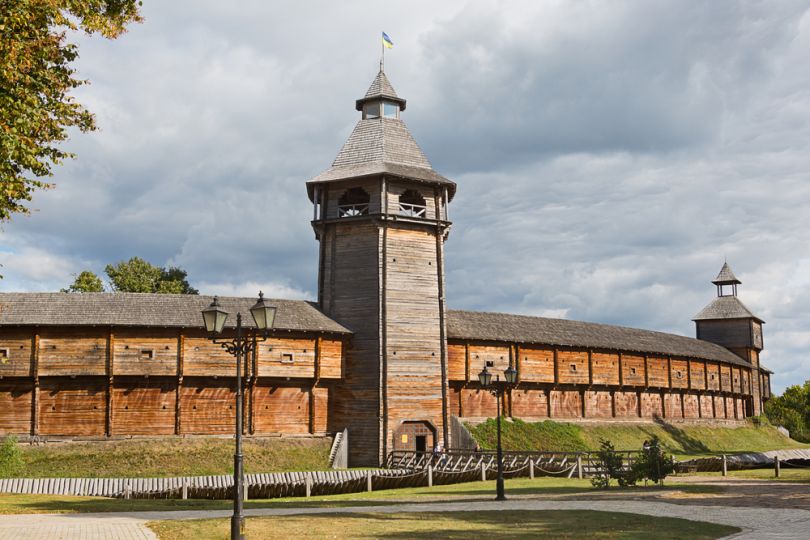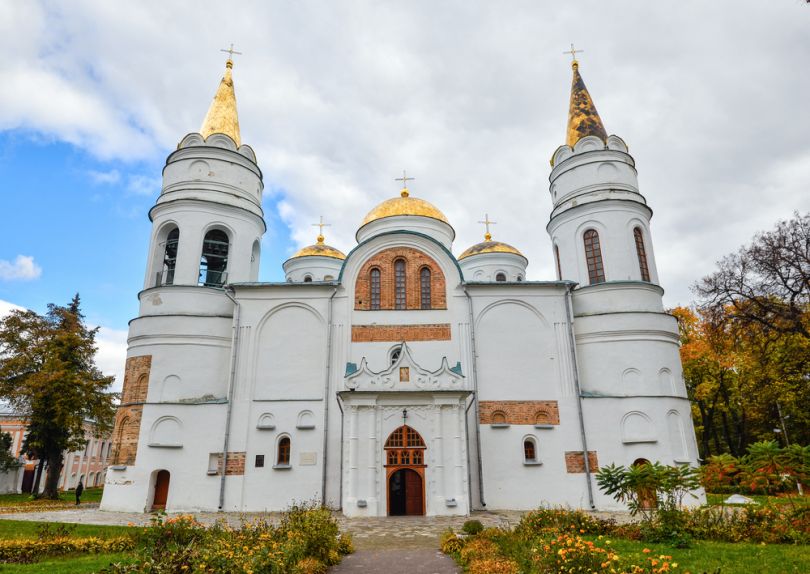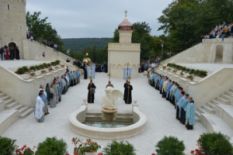А small settlement which laid the foundation for the great and mighty city of Chernihiv emerged on the tops of high hills, where the waters of the Desna and Stryzhen rivers merge. For many centuries, it was the second city of Kyivan Rus after its main rival Kyiv and at times equally important.
The first landmark that welcomes visitors to the city coming from Kyiv is the majestic church of St. Catherine. This Cossack Baroque church was built in the 17th century on the ruins of a Kyivan Rus church.
 The next hill is the oldest part of the city, the famous Prince Castle (Knyazhyy Dytynets), from which the development of the future capital of the Chernihiv-Siver principality began. A fortified town emerged here at the end of the seventh century. Behind its walls were the prince's court, the city's main temples, markets and houses of the nobles. From the outside, the town was protected by an earth mound with a wooden palisade and a deep ditch filled with water. The town could be accessed through one of the three gates only.
The next hill is the oldest part of the city, the famous Prince Castle (Knyazhyy Dytynets), from which the development of the future capital of the Chernihiv-Siver principality began. A fortified town emerged here at the end of the seventh century. Behind its walls were the prince's court, the city's main temples, markets and houses of the nobles. From the outside, the town was protected by an earth mound with a wooden palisade and a deep ditch filled with water. The town could be accessed through one of the three gates only.
Nowadays there is a huge park with an alley lined by 12 cast-iron cannons of the early 20th century. A legend says they were presented to the city by Tsar Peter the Great to thank Chernihiv Cossacks for the courage they displayed in the Great Northern War. The area where the castle used to stand still holds the remains of two princely houses, several boyar houses, a bishop's residence with a stone wall and a gate church from the Kyivan Rus times.

Image: The Grand Transfiguration Church, 11th century
But the main treasures of the city are the two perfectly preserved churches: the grand Transfiguration Cathedral (the oldest in Ukraine) built in the 11th century and the Boris and Gleb Cathedral, which is a century younger. The latter was once the main church of the eponymous monastery and housed the burial vault of ancient Russian princes. Later its refectory hosted the Chernihiv collegium, the first higher education establishment of Left-bank Ukraine. Several museum exhibitions and a collection of ancient Ukrainian icons are currently on display here.
Another nice park on the Boldyni Hills is home to several archaeological sites dating back to the 10th century. These are the stately Anonymous and Gulbyshche burial mounds where, according to historians, epic strongman Illya Muromets was laid to rest. The beautiful Elijah Church and Antony's Caves, a shrine protecting the city for over 1,000 years, are in the southern corner of the park.
Centuries and epochs have been weaving their intricate pattern in this city where the magical atmosphere of old times reigns and every stone and peal of bells ooze history. Do not be surprised if you feel like an epic hero for a moment.
Author: Anna Renskaya
Photos: shutterstock.com.








